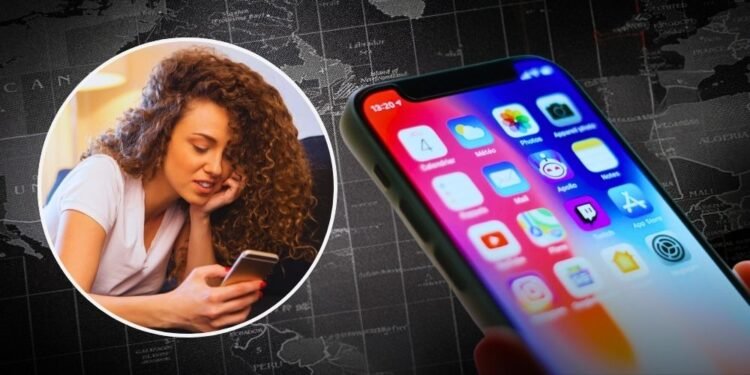Meta title: What Screen Time Does to Your Brain and Body, According to Experts
Meta description: Screen time affects more than just your eyes. Discover how digital overload is reshaping mental health, posture, sleep, and focus — and why it’s not entirely your fault.
In 2025, the average person now spends more time staring at screens than sleeping.
From work meetings and TikTok scrolls to late-night streaming marathons, we’ve built a lifestyle around digital devices — often without realizing how much they’re impacting our mental health, posture, sleep, and overall well-being.
This isn’t fearmongering. It’s biology.
New studies reveal that extended screen exposure is reshaping how we think, how we move, and how we process the world around us. Here’s what the latest science is telling us about the real cost of our digital lives.
The Brain Can’t Keep Up
Every swipe, click, and scroll rewards your brain with a hit of dopamine — the “feel-good” chemical responsible for pleasure and motivation.
This feedback loop, known as variable reward reinforcement, is the same mechanism used in gambling addiction. The problem? Unlike slot machines, your phone doesn’t shut down.
Research from MIT’s Media Lab and Stanford Behavioral Neuroscience labs shows that chronic screen exposure can increase cortisol levels (the stress hormone), disrupt memory formation, impair decision-making, and rewire your brain’s impulse control system.
Over time, we lose the ability to concentrate deeply — a reality supported by Microsoft’s 2022 study that found the average human attention span has dropped to 8.25 seconds.
And that’s before we even open the comments section.
Your Feed Might Be Fueling Your Anxiety
Global anxiety rates are surging, and the rise of 24/7 connectedness isn’t helping. In 2022, the World Health Organization reported a 25% global increase in anxiety and depression — with digital overstimulation named as a key contributing factor.
Constant exposure to algorithmic news cycles, curated perfection, and polarizing content puts our nervous systems on edge. We aren’t just consuming information anymore — we’re carrying the weight of war, crisis, and comparison all day long, in our pockets, in bed, and even in the bathroom.
This emotional overstimulation doesn’t end when you close the app. It sticks around as muscle tension, irritability, and chronic stress.
Tech Neck, Eye Strain, and the Digital Slouch
It’s not just psychological. Our bodies are adapting to screen habits in alarming ways.
Doctors are now regularly diagnosing physical issues tied directly to digital posture: “tech neck” from looking down at phones, blurred vision and dry eyes from reduced blinking while staring at screens, and back pain caused by collapsing into couches or beds during long scrolling sessions.
According to the American Chiropractic Association, spinal pressure increases by 60% when your head tilts forward just 60 degrees — the average angle most of us maintain while using our phones.
This isn’t just a posture problem. It’s a long-term musculoskeletal issue that’s showing up in people as young as 12.
Screens Are Stealing Your Sleep
The first casualty of digital overload is often sleep. Between late-night YouTube spirals and “just one more” TikTok session, the hours we once gave to rest are now dominated by bright blue light and endless distraction.
Blue light delays the release of melatonin — the hormone responsible for sleep — while the constant stimulation keeps our minds racing. According to the Sleep Foundation, 80% of people under 35 use their phones within one hour of bedtime, and over 60% report sleep disruption as a direct result.
Chronic poor sleep doesn’t just make you groggy. It weakens your immune system, reduces cognitive function, and increases your risk for anxiety, heart disease, and even Alzheimer’s.
You’re Moving Less Than Ever — And It Shows
Screens aren’t just replacing our attention — they’re replacing our movement.
Before, we walked to work, stood in lines, or moved while socializing. Now, we text while sitting. We work while sitting. We rest while sitting. The World Health Organization has officially classified prolonged sedentary behavior as one of the leading preventable health risks globally.
Stanford University data shows a 27% drop in global step count post-2020 — and we haven’t bounced back.
You might feel busy, but if most of that “busyness” is happening from a chair, the long-term effects still apply.
But Here’s the Truth: It’s Not Your Fault
Many of us feel guilty for our screen time. But blaming individuals misses the point.
Apps are designed — intentionally — to keep us hooked. Infinite scroll. Autoplay. Push notifications. Personalized algorithmic loops. These tools don’t exist to serve your well-being. They exist to serve engagement metrics.
As Tristan Harris, former Google design ethicist, put it: “Technology has outpaced human weakness. And it’s exploiting it at scale.”
Even when you know what’s happening, it’s difficult to resist. You’re not lazy — you’re reacting exactly as the system wants you to.
What’s the Fix? It’s Not Just Detox — It’s Design
Digital detox culture isn’t enough if the tech you return to is still optimized to control your time. What we need is a fundamental redesign of how we interact with technology:
- Smarter UX that promotes breaks and healthy usage
- Cultural shifts that reward disconnection, not always-on productivity
- Platforms that prioritize human outcomes, not just algorithmic efficiency
In short: tech that serves you — not the other way around.
Final Word: Screens Are Here to Stay — But You Don’t Have to Surrender
This isn’t about ditching your devices or going off the grid.
It’s about reclaiming control.
It starts with awareness. Then intention. Then redesign.
Because your attention is valuable. Your time is limited. And your body wasn’t built for infinite scroll.
Sources:
- World Health Organization: Mental Health Data
- MIT Media Lab + Stanford Neurology
- Microsoft Human Attention Study
- Sleep Foundation: Screen Time and Sleep
- American Chiropractic Association
- Tristan Harris / Center for Humane Technology
- Stanford Global Activity Data via smartphone motion tracking
- DataReportal Global Digital Reports (2024)












